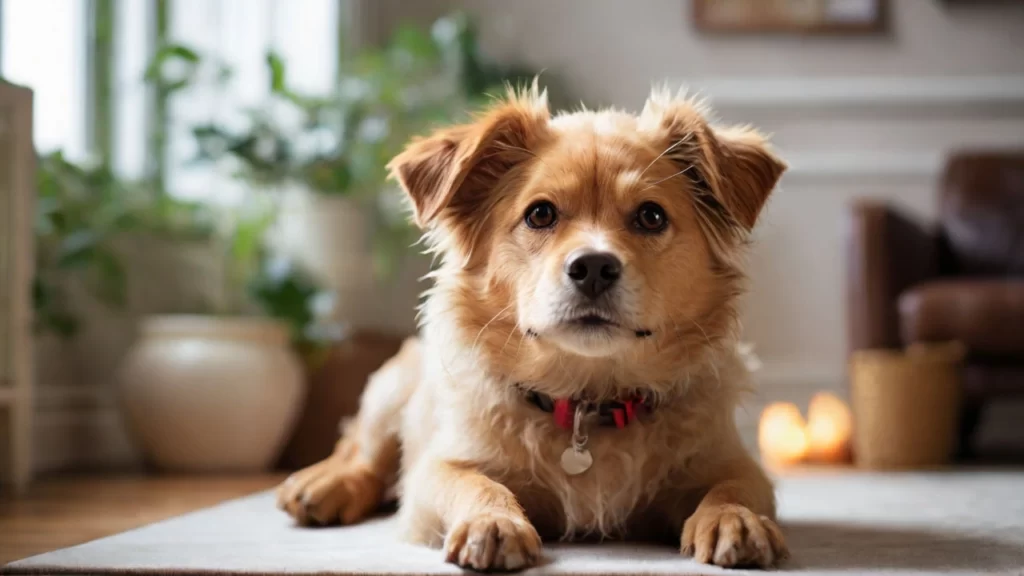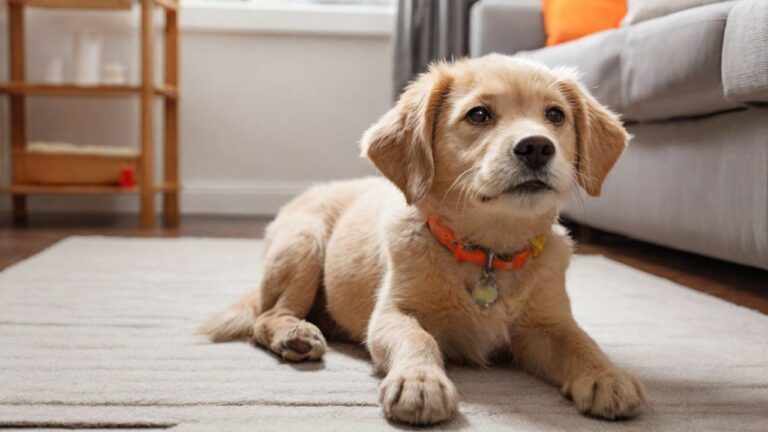Potty training an older dog in an apartment can be daunting, but it is not impossible. With the right approach and patience, you can teach your furry friend to do their business in the right place. In this article, we will discuss some tips and tricks to help you potty train your older dog in an apartment.
The first step in potty training an older dog is establishing a routine. Dogs thrive on performance, and it will help them understand when it’s time to go potty. Take your dog out first thing in the morning, after meals, and before bedtime. This will help them get into a routine and make it easier to hold their bladder. When you take your dog out, use a leash and take them to the same spot every time. This will help them associate that spot with going potty. Remember to use positive reinforcement when your dog does their business in the right place. You can treat or praise them to let them know they did well.
Crate Training for Potty Training
Crate training is beneficial for teaching your dog how to use the bathroom in an apartment. Start by making your dog comfortable with the crate, and show them how it can help them develop good bathroom habits. Use a specific area enclosed by a playpen, x-pen, or child/pet gate to make a safe and organized space, especially for potty training puppies.
Training Techniques and Rewards
It would help if you used effective training techniques to potty train your dog in an apartment. Start by giving your dog positive feedback and treats when they do what you want. Use the exact words for potty training with your family so your dog knows what you mean. Make a regular potty training schedule so your dog knows what to expect. Praise and reward your dog when they go to the bathroom in the right place. The most important thing is to repeat this process—positive behavior helps your dog form lasting habits.

Setting a Schedule for Potty Training
A structured schedule is essential for potty training your dog in an apartment. First, pick a specific place where your dog can go to the bathroom every time. Go to that place every hour, making a habit that matches your dog’s natural bathroom needs. Look for signs of your dog being restless or sniffing, meaning they must go. Help your dog succeed by following a schedule with regular breaks, ensuring they have enough chances to stick to the routine. The main rule is to have a plan for your dog, giving them consistency and encouraging good potty habits.
Supervision and Understanding Dog’s Needs
Potty training your dog requires careful observation and knowing what your dog needs. Watch your puppy or dog closely, and notice their behavior and signals. Supervising them is essential to avoid accidents and show them where to use the bathroom. Learn how to tell when your dog needs to go and look for signs like restlessness or sniffing. Also, learn more about topics like how to deal with dog frostbite, how to potty train an adult dog, and how to house train an older dog, adjusting your method to the specific needs of your furry friend.
Dealing with Accidents and Challenges
Potty training your dog involves accidents; you must deal with them with patience and positive feedback. Don’t punish your dog for accidents, as this can confuse and scare them. Instead, repeat the behavior you want to see. When your dog loses control, catch them while they are having an accident and gently move them to the right place. Use a leash for more control during potty breaks, and lead them to the spot you want. Be ready to clean up pee and poop accidents quickly, using cleaning products that are safe for pets to get rid of smells and prevent more accidents.
Special Considerations for Older Dogs
Potty training older dogs require careful consideration of their needs and situations.
- Learn about your dog’s breed and background: Knowing your dog’s breed and environment helps you adjust the training to their specific traits.
- Tips for Potty Training an Older Dog: Using practical tips for potty training older dogs involves being patient, consistent, and adapting to their unique needs.
- Reasons an Older Dog May Need Potty Training: Find reasons such as a lack of clear rules, discomfort, cognitive problems, or weakening senses that may require potty training for older dogs.
- Use bell training: Bell training can be a helpful way to indicate when an older dog needs to go outside for a bathroom break.
- Use pee pads or grass patches: Offer alternatives like pee pads or grass patches to suit the changing needs of older dogs.
- Make plans for while you’re away: Planning for times when you’re away keeps the potty training going, keeping consistency for older dogs.
- Additional tips for potty training an adult dog: Consider other recommendations, including dealing with possible health issues, getting rid of previous pet smells before bringing a new dog home, and creating a supportive environment for successful potty training.
Professional Assistance and Additional Tips
Potty training can be complicated, and professional help and extra tips may benefit you.
- Use dog litter boxes: Adding dog litter boxes to your training plan gives an indoor option for your dog to go to the bathroom, making it more convenient in an apartment setting.
- Hire a puppy consultant: Consider hiring a puppy consultant or professional trainer. Their knowledge and advice can significantly help your potty training success, solving specific problems and customizing a plan that fits your dog’s needs and lifestyle.
Why is My Dog Regressing in Potty Training
Your dog may forget their potty training for different reasons. One reason could be that they have a health problem that makes it hard for them to hold their pee. You should take your dog to the vet to check if they are okay. Another thing to think about is if anything has changed in your dog’s life or routine. Dogs like things to stay the same, and changes like moving to a new home, having new family members, or having a different schedule can make them feel stressed and anxious. This can make them forget their potty training. You can help your dog feel better by dealing with any changes and giving them a stable environment.
Also, your dog may forget their potty training if they have not learned it well or if you have not trained them regularly. It is very important to praise your dog when they do the right thing and not to scold them when they make a mistake, as this can scare and confuse them. Being consistent, patient, and positive in training can often help your dog remember their potty training and have good potty habits again.
Conclusion
Potty training an older dog in an apartment can be challenging, but it is possible with patience and consistency. Remember to establish a routine, use positive reinforcement, and be consistent with your training techniques. Crate training, setting a schedule, and understanding your dog’s needs are also necessary. If you’re having trouble, consider using dog litter boxes or hiring a puppy consultant for additional help.
This article has helped guide you through potty training your older dog in an apartment. Remember, it takes time and effort, but you can teach your furry friend to do their business in the right place with the right approach.


